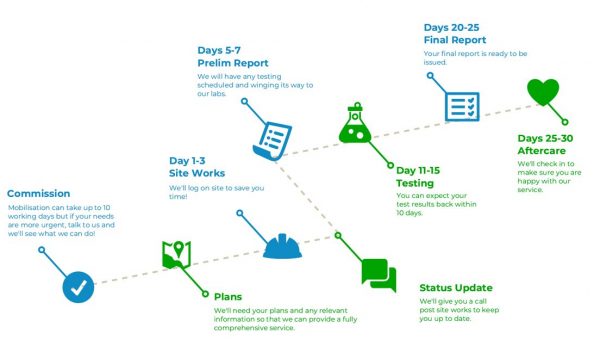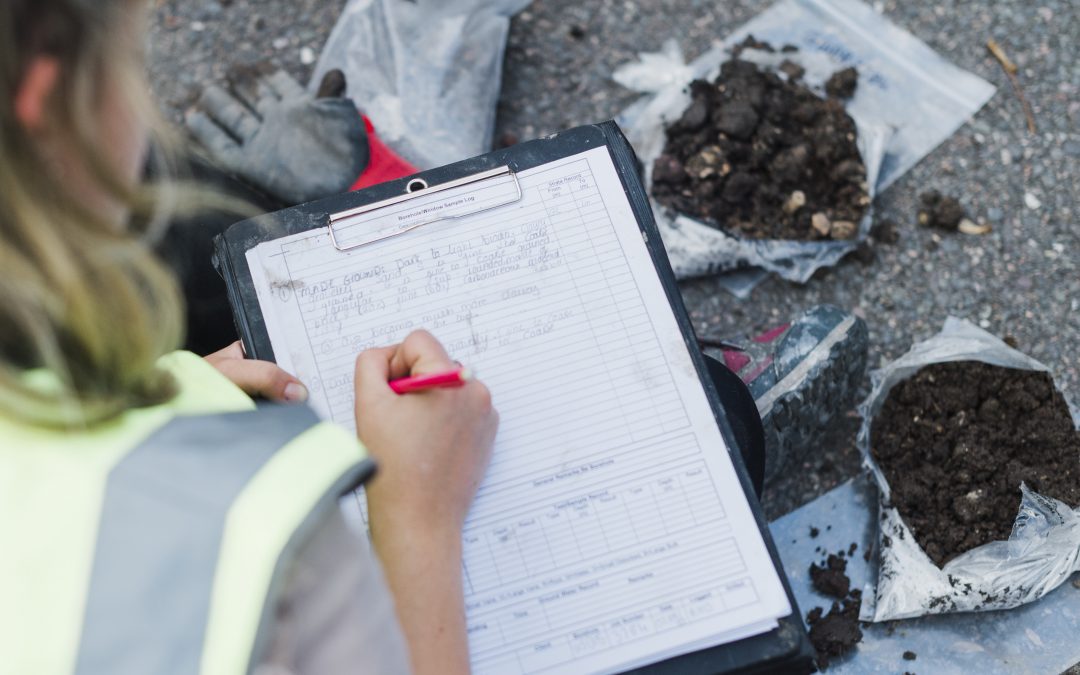Why Preliminary Site Reports Are Vital
Geoenvironmental • Geotechnical • Industry matters
Acrimonious disputes between main contractors and employers that emerge as a result of building projects that are completed late, are sadly all too common in the construction industry. This G&W Guide aims to show that Preliminary Site Reports and collaborative design can help mitigate this thorny issue.
Construction project delays often begin at the design stage and either result from issues around approvals or an underestimation of the project costs. These delays are often caused by an unexpected ‘spanner’, or two, being thrown into the design work itself. If these ‘spanners’ are related to the contents of the Final Site Report, everyone will be asking: “Why have we only just been told this now?”
Nobody likes nasty surprises so one of Ground and Water’s USPs (unique selling propositions) is the provision of a Preliminary Site Report. The prelim report is an initial review of the findings of the Site Investigation, which includes comments on the ground conditions encountered with a view on providing initial guidance on anticipated foundation design/bearing capacity, results of soakaway tests, anticipated results of Geotechnical classification testing and results of chemical laboratory testing. It is a vital cog in the care/value/attention we give a job.
Geotechnical and geoenvironmental consultants are often reluctant to commit to how long they will take to produce their Final Site Investigation Report. These reports are bound up in legislation and regulation and a huge amount of detail; so a lot of time and care must be taken over their preparation. Their complexity is also dependent on the project size and the ground and environmental conditions encountered. So, it not uncommon to wait for two months to receive the final report containing the good, or bad news, about your site and the implications for your project.
You will see from Ground & Water’s time frame expectations graphic below, there is a little comment which basically says a “preliminary report” will be issued within a week of site works.

Ground & Water believes the reason a preliminary report so important, is because it’s an early cross-check in the Site Investigation process, allowing us to liaise with Civil and Structural Engineers and our clients’ Technical Teams to ensure what we are delivering is what you need and it helps to manage everyone’s expectations at the earliest opportunity. For example:
If the soakaway tests we undertake don’t work, and this is critical for your drainage design, we’re sure you would want to hear this a few days to a week after site investigation works instead of several weeks down the line.
How our Preliminary Site Reports can help:
- If the prelim report suggests that your foundations might need to be piled, then we can quickly arrange for a deeper borehole to be undertaken and include it within the final report. This means pile design information is provided at week 4/5 and not week 8 so cutting out the delay
- If the prelim report highlights some elevated levels of Lead/PAH’s/Asbestos, then consideration can be given to extra trial pits, testing, and analysis, to fine tune this before the final report is issued. We can provide a remediation strategy at week 4/5, not week 8
- Should the prelim report highlight some inconsistencies in the ground conditions and bearing capacities, then it provides an opportunity to review the data with your Structural Engineer and highlight where additional investigation could aid design. Providing more certainty at week 4/5, instead of 8
- Should the prelim report highlight some inconsistencies in the drainage potential of the site, then it provides an opportunity to review the data with your Civil Engineer and highlight where additional investigation could aid design, again providing more certainty at an early stage.
The report we produce is usually a one- or two-page summary. The typing up of logs, reviewing site information and reporting is what takes up the time and this information will be contained in the final report. We can even offer a preliminary report in a phone call a day or two after the works, if you wish, followed by the written summary within a week.
No nasty surprises!
The preliminary report is a fundamental cog in our “design by collaboration” approach and allows early discussions on our findings, so problems get sorted sooner. So please use it because by doing so, the design process can keep moving forward and construction costs can be accurately forecasted. This means you don’t get into the position that when your main contractor arrives on site to start work, some of the design drawings it needs are still to be completed and approved and the project starts with a built-in delay. We all know where that can potentially lead, and the certainty is if you end up there it will be costly for all concerned.
